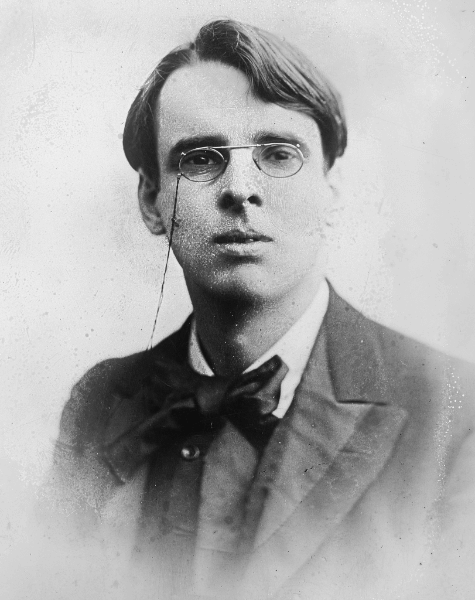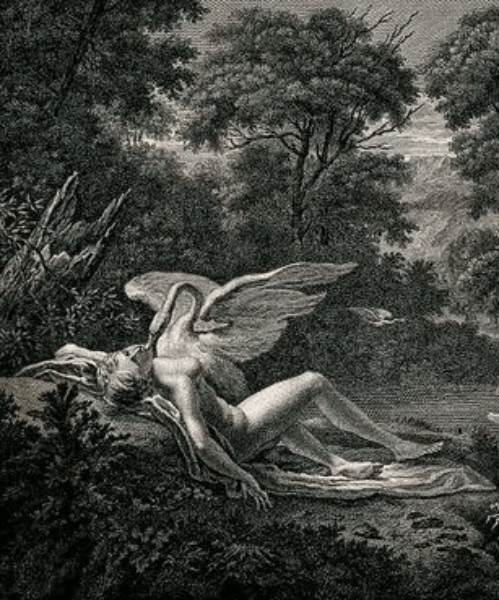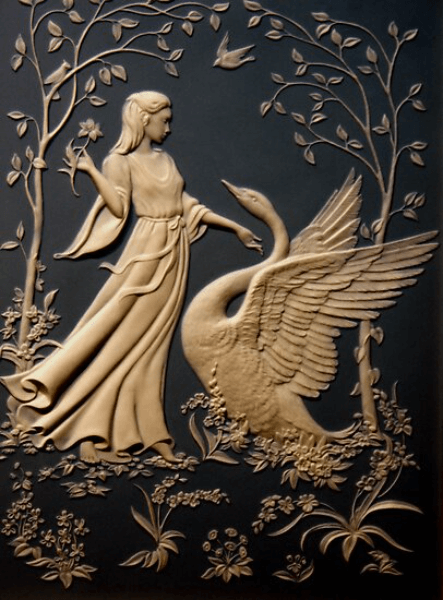Leda and The Swan By William Butler YeatsWilliam Butler Yeats' magnificent poem "Leda and the Swan" centers on the fabled story of Leda and her encounter with a swan. This captivating story tackles the themes of power, passion, and transformation while capturing the essence of Greek mythology. Readers are drawn into a world where the lines between humans and gods are hazy by Yeats' evocative language and vivid images. We discover a tale that resonates with timeless relevance as we explore further into this captivating poetry and observe the delicate dance between the mortal and divine. Join us on a voyage where the depth and intricacy of Yeats' poetry merge with the ancient myth of Leda and the swan to enthral readers. Prepare yourself for a glimpse into the world of myth and fantasy as we analyze William Butler Yeats's "Leda and the Swan" in its entirety. 
Leda is a character from Greek mythology, and William Butler Yeats, an accomplished Irish poet, playwright, and Nobel winner, created "Leda and the Swan" based on her tale. Yeats, who is renowned for his in-depth investigation of Irish nationalism, mysticism, and symbolism, incorporates these themes into the poem, lifting it above the level of a straightforward mythical account. Yeats' fascination with the cyclical cycle of history and the transformational power of events is evident in this poem, which was written during the volatile years of the early 20th century. The myth of Leda, a human woman who turns into Zeus, the ruler of the gods, in the body of a swan, serves as the inspiration for "Leda and the Swan." Castor and Pollux and Helen and Clytemnestra are the parents of two sets of twins as a result of their relationship. Yeats expertly combines the myth's components with his own artistic interpretation, examining issues of sexual violence, the divine's incursion into earthly life, and the results of such meetings. The poem also addresses more general issues like fate, power relationships, and the impact of major historical moments. When reading "Leda and the Swan," readers are thrust into a poetic journey that is filled with rich imagery that suggests tension and imminent change. Allusions, metaphors, and enjambment are just a few of the poetic elements that Yeats expertly uses to craft a lyrical and thought-provoking experience. The poem's structure, which consists of fourteen lines that resemble sonnets, adds to its musicality and enables a condensed but powerful analysis of the myth's complexities. Through "Leda and the Swan," Yeats urges readers to consider the intricate relationships between desire and power, the interactions between the divine and the mortal, and the far-reaching effects of remarkable events. The poem continues to serve as a monument to Yeats' mastery of the poetic form and his capacity to dig deeply into mythology and human experience. Join us as we examine the enduring significance of William Butler Yeats' "Leda and the Swan" as we peel back the layers of symbolism and emotion in this classic work of literature. Summary
Few poems in the canon of classic poetry have the attraction that "Leda and the Swan" by the renowned Irish poet William Butler Yeats does. With its themes of power, metamorphosis, and the relentless force of destiny, this mysterious work captivates readers by fusing ancient mythology, vivid imagery, and profound symbolism. Let's explore Yeats' masterpiece, where a bizarre encounter between the human Leda and the majestic Swan sets off an incredible series of occurrences. Unexpectedly, Leda, a mortal woman of extraordinary elegance, takes the lead in this mythical story. She is lured into a cosmic union of divinity and mortality as a result of her meeting with the Swan, a representation of Zeus, which transcends the limitations of everyday existence. Leda serves as a vehicle for forces beyond her comprehension as Yeats explores the frailties and complexity of human nature through her character. The timeless story of Leda's encounter with the Swan unfolds as Yeats' poem "Leda and the Swan" envelops us in the legendary tapestry of ancient Greece. Leda, a mortal queen of exceptional beauty, is dragged into a cosmic dance of fate on a moonlit night when the Swan, who represents the god Zeus, appears in front of her. Leda is initially in awe of the Swan as she observes its beautiful shape gliding gently across the serene waters. Its magnificent display of white feathers on its wings gives off the impression of having an otherworldly sheen. The peace is quickly disturbed, however, when the Swan approaches Leda boldly and violently and envelops her in its mighty wings, overwhelming her with an intensity that is both horrifying and seductive. Leda's mortal existence merges with the divine in this transformational embrace, transcending the limitations of the everyday. The distinction between the human and the celestial is blurred when Zeus forms within the Swan, and Leda unknowingly serves as a vehicle for the aspirations and purposes of a greater power. The explosive force of the encounter sets off a series of events that would permanently change the history of Greek mythology. Leda, a strong and graceful woman, experiences a significant physical and psychological transformation. Her being is permanently changed by the might of Zeus flowing through her veins. Two pairs of twins are born from this coupling of Leda and the Swan, and they will go on to influence how the world is now. Leda and her mortal husband Tyndareus give birth to the immortal Dioscuri Castor and Pollux, who gain notoriety for their valour and heroism. Leda and Zeus' daughter Helen of Troy, alluring in her beauty, is revealed to be. She is destined to start the Trojan War and make a lasting impression on history. In his magnificent depiction of this tale, Yeats not only perfectly evokes the physicality and intensity of the encounter, but also goes in-depth on its psychological and emotional fallout. Leda, who has been indelible marked by the supernatural, struggles to come to terms with her new identity as she is divided between her mortal roots and the imposing gods. Her transformation serves as a reminder of the significant impact that unusual occurrences can have on our lives by reflecting the complex intricacies of human nature. Leda's meeting is echoed throughout Greek mythology as the poem progresses, imprinting her story on the collective consciousness of humanity for all time. Yeats inspires us to consider the relationship between power, transformation, and destiny through his evocative imagery and engrossing storytelling. He leaves us enthralled by the enduring force of old tales and the timeless truths they contain. Themes Of The Poem
Power and Transformation: The central theme of "Leda and the Swan" is power and how it transforms. Leda stands for human frailty, while the Swan, who represents Zeus, shows great heavenly strength. The physical struggle they have turned into a metaphor for the clash of unbridled power and the effects it has. Leda's transition into a different person on a physical and mental level illustrates the immense effect that power can have on a person, changing their fundamental nature and rewriting their fate. Through this theme, Yeats challenges us to consider the precarious balance between power and its effects, as well as the enormous changes it may wreak on both people and society. Destiny and Predetermination: The idea of fate, a recurrent motif in Greek mythology, is highlighted in "Leda and the Swan." The encounter between Leda and the Swan is portrayed as a fateful occasion that was predetermined by the gods and destined to alter the path of history. This meeting foreshadows the birth of the twins, Castor and Pollux, and Helen of Troy, beginning a chain of events that will echo throughout time. Yeats challenges us to consider the immutable nature of fate and how it affects our lives, implying that external influences might direct our lives in a preset direction whether or not we are conscious of it. Sexual Violence and its Consequences: A more contentious issue in "Leda and the Swan" is the examination of sexual violence and its effects. The violent and non-consensual nature of Leda and the Swan's interaction is strongly depicted in the poem. Yeats explores the unsettling elements of the story head-on, using it as a springboard to consider the far-reaching effects of such an action. Leda's violation has repercussions throughout her life, giving birth to kids who will go on to influence history. This theme prompts a critical analysis of power relationships, consent, and the long-term effects of traumatic events. The Complexities of Human Nature: Yeats explores the complexity of human nature through Leda's persona. Leda, as she deals with the fallout from her meeting with the Swan, is an embodiment of the duality of weakness and might, of mortal and divine. Her experience becomes a representation of how complicated and multifaceted mankind is, demonstrating our ability to withstand, alter, and amicably unite conflicting elements inside ourselves. Yeats challenges us to face the internal conflicts and contradictions in ourselves, fostering a greater comprehension of the human predicament. ConclusionIn "Leda and the Swan," Yeats creates a tapestry of profound themes that speak to readers everywhere in time and place. The poem is elevated to a timeless work of art by its investigation of power, metamorphosis, destiny, and the intricacies of human nature. As we immerse ourselves in the mythological world of ancient Greece, we are forced to face unpleasant facts, challenge conventional wisdom, and consider the broad effects of our decisions. Yeats urges us to take an introspective trip via the power of his poetry in order to gain a greater understanding of the mysterious depths of the human experience. |
 For Videos Join Our Youtube Channel: Join Now
For Videos Join Our Youtube Channel: Join Now
Feedback
- Send your Feedback to [email protected]
Help Others, Please Share









